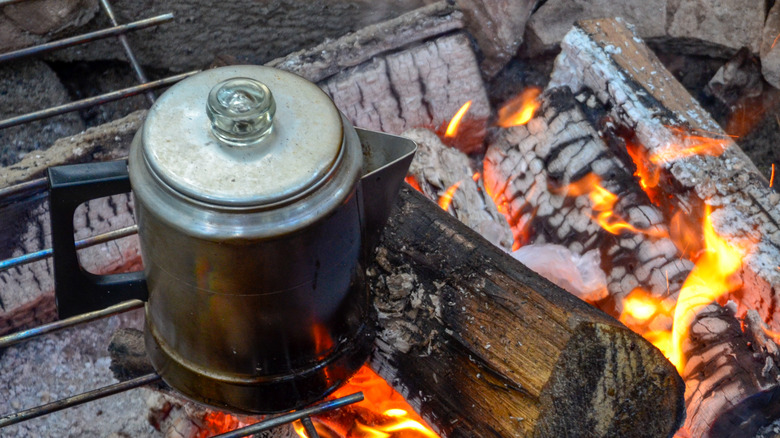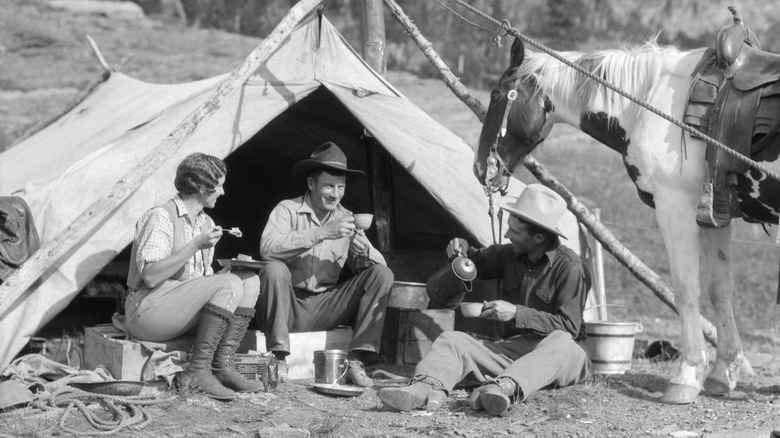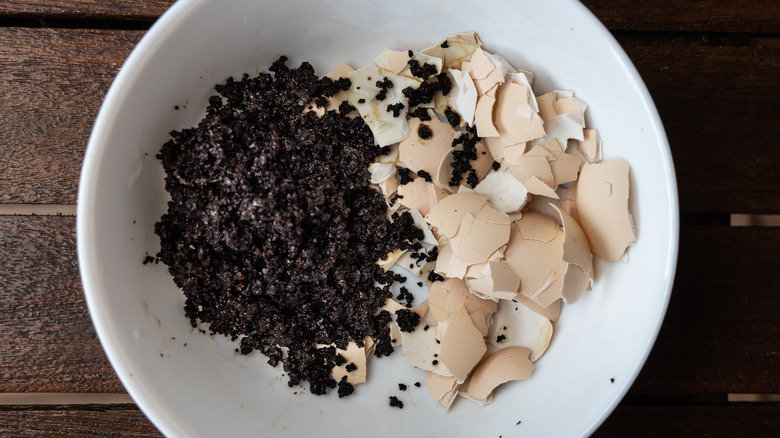What Is Cowboy Coffee?
Life on the open range requires things of necessity much more than objects of convenience. When cattle ranchers and herders are moving hundreds of steers across plains and valleys, everything they need to work and survive is packed on their horses. There's only so much they can fit in their saddlebags, and espresso machines and Keurig pods are typically deemed unnecessary and left on the cutting room floor. But you better believe these early risers need their coffee, and they can make an eye-opening pot with the most basic essentials. The result is what's known as cowboy coffee, which is just one way you can make coffee without a machine or strainer. And, no, you don't need to be a cowboy (or girl) to make or appreciate the rustic brew.
Cowboy coffee is basically coffee made by placing coffee grounds in boiling water, letting it steep, and, when the grounds sink to the bottom of the pot, you pour and enjoy. There are no filters involved; you work with a pot and a cup. As you can see, it is an easy way for cowboys, or anyone living or working outside, to get a hot cup of fresh coffee. Still used by wranglers today, it's also a great method for campers and outdoor enthusiasts, but it's a fun way for coffee lovers who prefer the indoors to experience a new kind of coffee-making as well.
How to make cowboy coffee
All you need to make cowboy coffee is a pot, ground coffee (not instant coffee, which is made differently), and a cup to pour the finished coffee into. Heat your water over an open flame (preferably made by hand, outdoors, but a stovetop will work just fine) and once it comes to a boil, remove the pot from the heat and let it sit for 30 seconds. This brings the water temperature down a little, which many believe makes for better-tasting coffee. In fact, the National Coffee Association suggests that the perfect temperature for coffee extraction is between 195 and 205 degrees Fahrenheit, but most cowboys probably don't keep kitchen thermometers on hand. Water boils at 212 degrees, so the wait time should bring the water temperature down perfectly.
In the pot, add two tablespoons of coffee grounds for every cup (eight ounces) of water and stir. Let the mixture sit for a couple of minutes, stir, and let it sit again for two minutes. At this point, pour in some cold water to encourage the remaining floating coffee grounds to sink to the bottom of the pot. Pour the fresh coffee at the top into a cup (tin, enamel, or otherwise) and enjoy.
Tips for better results
As homespun as the method is for making coffee, it can turn out some surprisingly delicious results, but there is one unconventional addition you can make to safeguard your cowboy coffee against bitterness and excessive acidity. The secret lies in eggshells, of all things. If you are familiar with Swedish coffee, you know that it is brewed using a raw egg mixed into the coffee grounds, but using just the shell will yield similar results. Adding crushed eggshells to your coffee grounds will lead to a smooth, mellow cup of coffee. The magic of this phenomenon happens because eggshells contain calcium carbonate. This element is considered alkaline on the pH scale, which measures a product's acidity level. Coffee is naturally acidic, and when it comes into contact with an alkaline, the acid is balanced out.
Of course, cowboy coffee can be doctored up just like coffee from a conventional coffee maker or French press, so you can also add milk (straight from the cow or from a carton) or sweeteners to counteract cowboy coffee that turns out too strong, bitter, or acidic for your taste. When done correctly, cowboy coffee could hold its own against any coffee made in fancier or trendier methods like pour-overs or flashy siphons.



